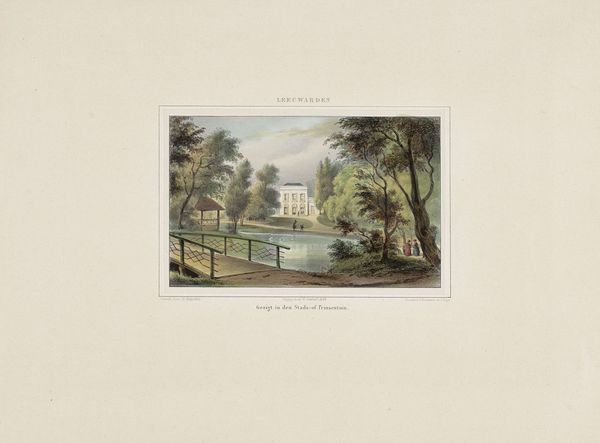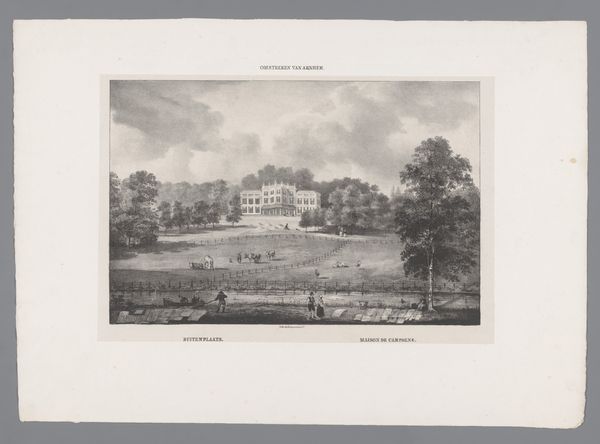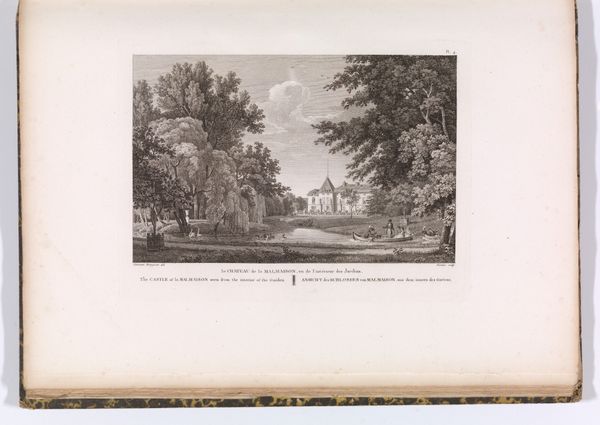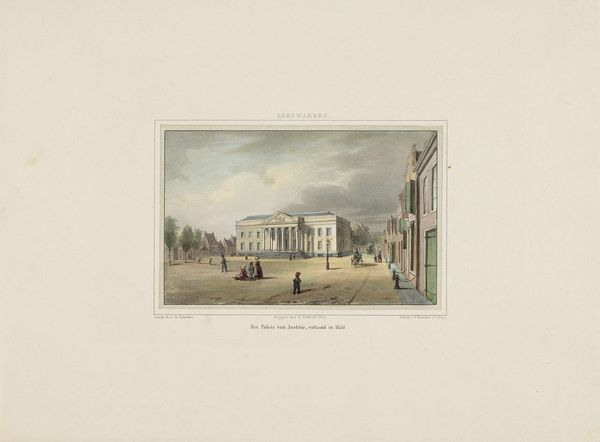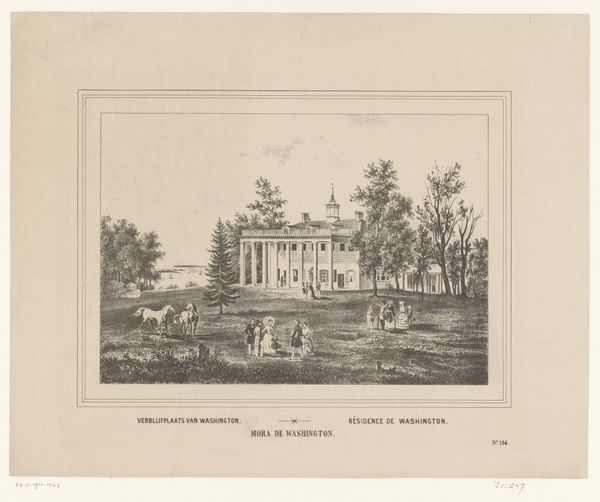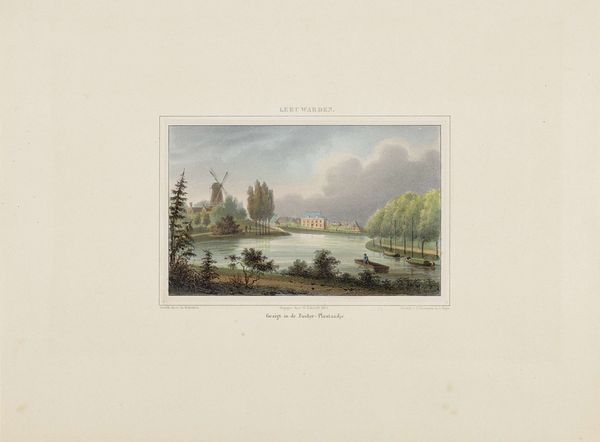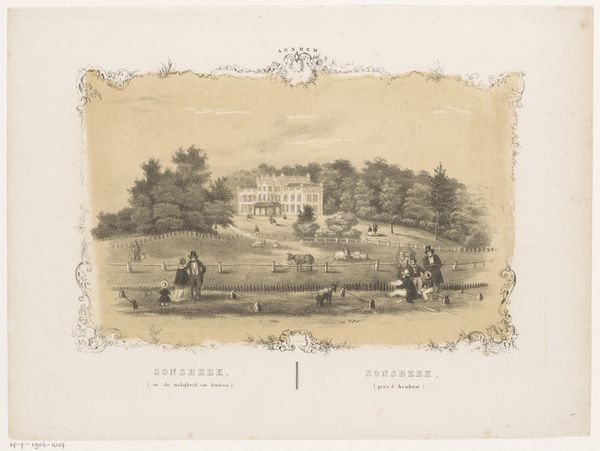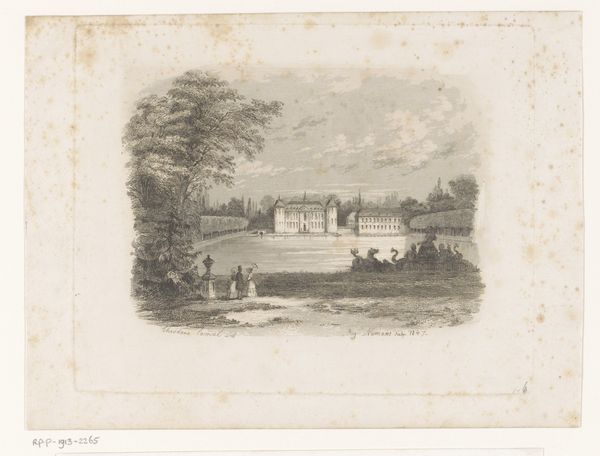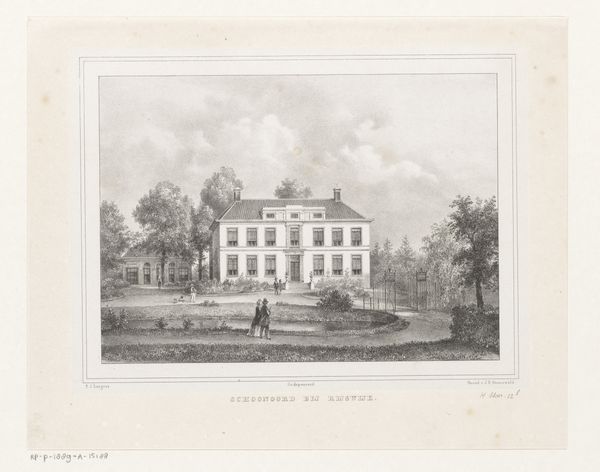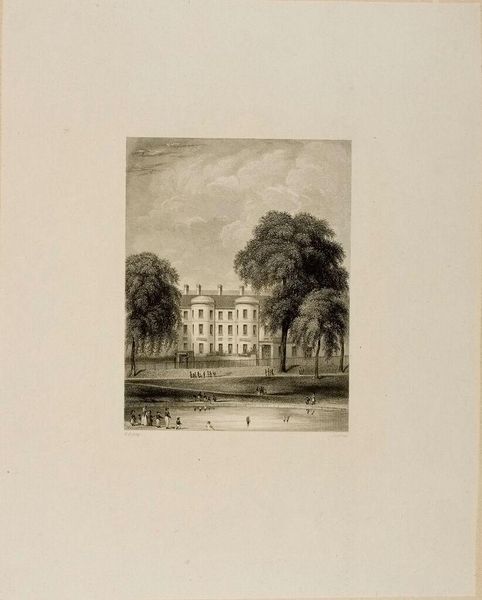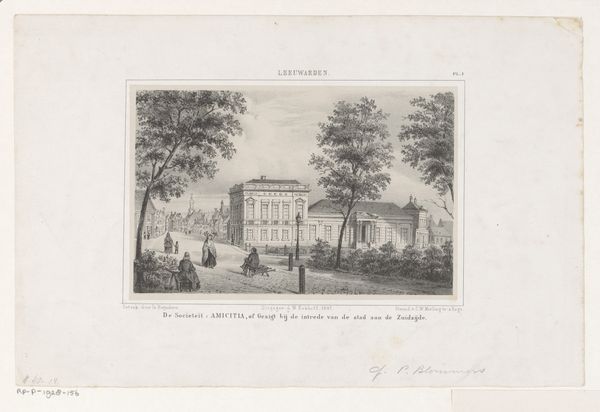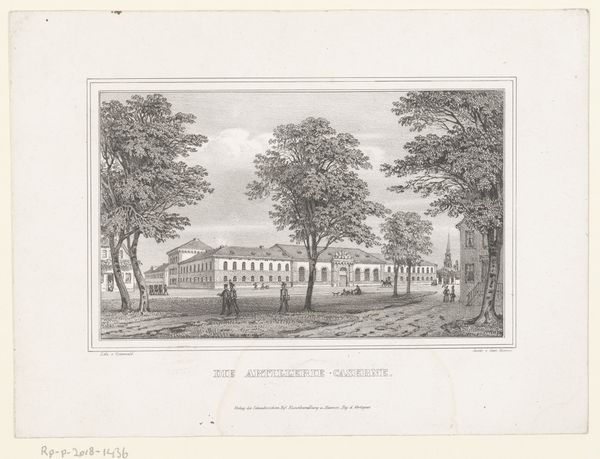
tempera, lithograph, print
#
tempera
#
dutch-golden-age
#
lithograph
# print
#
landscape
#
romanticism
#
cityscape
Dimensions: height 250 mm, width 340 mm
Copyright: Rijks Museum: Open Domain
This print, showing the Prinsentuin in Leeuwarden, was made by Isaac Reijnders Sz. in the mid-19th century. It is made using a method called lithography, a printmaking technique based on the simple chemical principle that oil and water do not mix. In lithography, an image is drawn on a flat stone or metal plate with a greasy substance. The stone is then treated with a mixture of acid and gum arabic, etching the areas not protected by the grease. When the surface is subsequently dampened and inked, the ink adheres only to the greasy image, which is then transferred to paper under pressure. The lithographic process allowed for relatively quick and inexpensive reproduction, democratizing image production in the 19th century. This print thus reflects the era’s burgeoning culture of mass media, driven by industrial advancements and a growing middle class. It also speaks to the changing role of art, as it became more accessible to a wider audience beyond the wealthy elite.
Comments
No comments
Be the first to comment and join the conversation on the ultimate creative platform.
